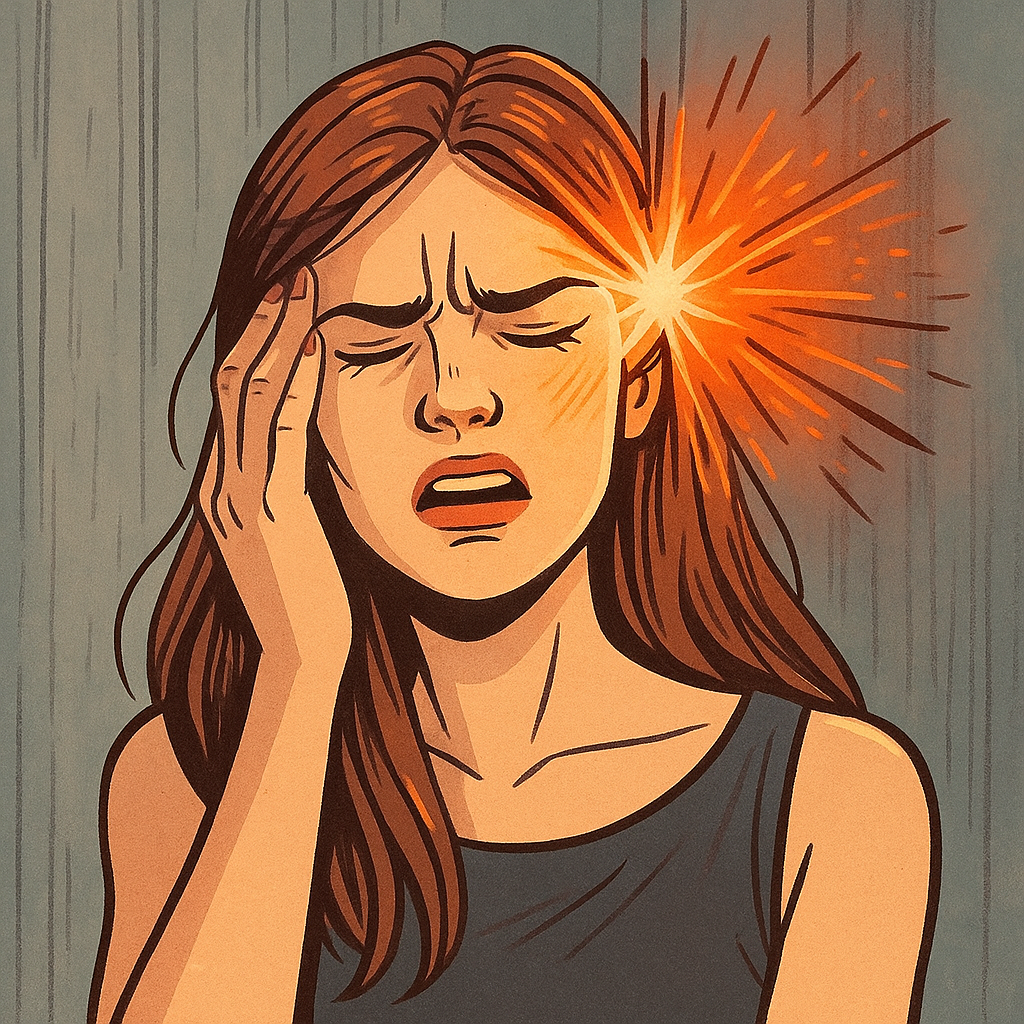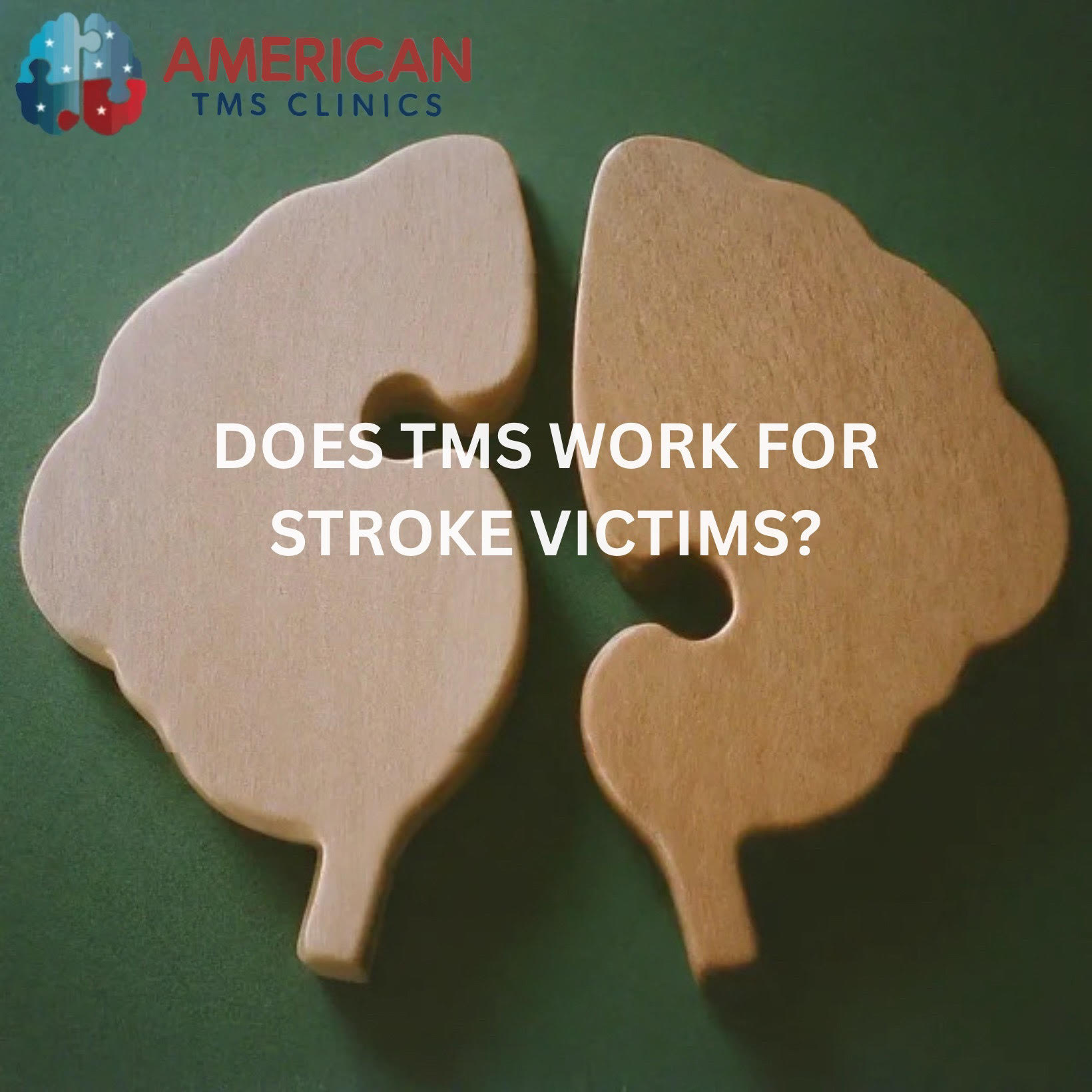
More and more research is being published that supports Transcranial Magnetic Stimulation (TMS) as an effective therapy for various neurological disorders. By stimulating different areas of the brain, TMS can “speed up” or ‘“slow down” the areas that may not be working optimally. Aphasia is indeed one of these disorders that can be remedied by TMS.
Aphasia is a condition that affects a person’s ability to communicate1. It often happens from traumatic brain injuries such as concussions or strokes. This can be very frustrating for not only the person experiencing the aphasia, but to the family and friends of the patient. Especially because there are currently very few treatments that can rehabilitate Aphasia.
Because of this, when Alexandra came into our care with severe aphasia seeking TMS therapy, we knew we had a duty to provide the best possible care. To do this, we had to explore the existing research, and develop a protocol that would target this Aphasia specifically tailored to the patient.
In this article, we will answer a few important questions related to Alexandra’s case, including:
- What is Aphasia?
- What does the research that we used to develop the protocol say about TMS for aphasia?
- How did TMS help Alexandra improve her ability to communicate?
Understanding Aphasia
As briefly mentioned, Aphasia is a disorder that can make communication very difficult. It can affect not only speech and language comprehension, but also reading and writing.
Aphasia can occur after a number of serious brain injuries such as concussion, stroke, or even brain tumors1. The severity of the injury often dictates the severity of the Aphasia.
The symptoms of Aphasia can range anywhere from someone having difficulty understanding certain words or grammar, all the way to the complete inability to speak or understand language, and anywhere in between.
Types of Aphasia
There are different types of Aphasia depending on how it manifests. For example, Broca’s Aphasia impacts an area called “Broca’s Area” and causes an inability to speak and write. This can mean that even though the person may understand a conversation, they lack the ability to communicate a response. Other types of Aphasia include (but are not limited to)1:
- Wernicke’s Aphasia
- Transcortical Aphasia
- Conduction Aphasia
- Mixed Aphasia
- Global Aphasia
Each of these types of Aphasia produce different types of difficulties associated with communication.
Because these conditions often significantly affect daily functioning, it is incredibly important to seek out professional care as soon as possible when experiencing the symptoms.
By far, the most common therapy for Aphasia is Speech Language Therapy. This is a treatment where a Speech Language Pathologist helps the person with Aphasia “relearn and practice language skills and learns to use other ways to communicate” such as sign language1.
Speech Language Therapy is an integral form of treatment for those struggling with Aphasia. But it is important to simultaneously address the root of the Aphasia (concussion, stroke, or brain tumor).
This is where TMS comes into play. While not an adequate treatment if a brain tumor is the root cause, TMS has been shown to help rehabilitate Aphasia caused by strokes2.
What the Research Says About TMS for the Treatment of Aphasia
When a stroke is the cause of the Aphasia, multiple studies have shown that TMS can accelerate the path to recovery, especially when paired with Speech Language Therapy. One such study titled “Transcranial Magnetic Stimulation and Aphasia Rehabilitation” showed that in multiple peer reviewed studies, a series of at least 10 sessions of TMS results in significant improvement in communication for people with Aphasia2.
Because of these rigorous studies, we now know that TMS can indeed rehabilitate Aphasia with high rates of success. But now the question is, why?
Why does TMS work for Aphasia?
The rationale behind why TMS works in treating Aphasia is complicated and not yet fully understood, but we do know a couple things based on what works and what doesn’t. When testing what frequency of TMS and what target areas produce the best results, researchers found that 1Hz TMS works best over two areas in the side of the brain that was unaffected by the stroke^2. This is interesting because we might otherwise expect that targeting the damaged area would be of most help.
This is where a 1Hz (1 pulse-per-second) becomes the key to success. In a stroke, what often happens is that the side of the brain that is not damaged tries to overcompensate, and works too hard2.
This leads to dysregulation and malfunctions. When we send TMS pulses at a rate of only 1 pulse-per-second into the unaffected side, we are telling it to slow down and stop overcompensating. What this does is it gives an opportunity for the damaged side to try and repair itself. This effect is bolstered by Speech Language Therapy in using this opportunity to build new connections in the damaged side of the brain.
Now that we have a basic understanding of how and why TMS works for stroke-induced Aphasia, let’s look at how it changed Alexandra and her family’s lives by helping her regain her ability to communicate.
Alexandra’s success story:
When Alexandra came into our clinic, she presented with severe stroke-induced Aphasia. She was only occasionally able to communicate, often only by eye contact and slight movements. Her family had tried many other therapies since the advent of her stroke over the past 18 months, but without much success.
We knew that Alexandra was in desperate need of help, and we dove into the research mentioned above, and got to work. We used the 1Hz protocol for “slowing down” the overactive side of the brain, specifically in the two areas responsible for speech and language comprehension.
1st Session:
To our surprise, Alexandra began responding to treatment almost immediately. In fact, in the 1st session, she began making quiet sounds, and moving her finger more than she had been able to in the last 18 months.
3rd Session:
By the 3rd session, Alexandra was consistently able to respond to simple phrases such as “are you hungry?” She could more consistently move her hand and was able to recognize familiar people much more quickly.
10th Session:
By the 10th session, Alexandra was much more aware of everything happening around her, and was often mumbling throughout the sessions. This was an incredible change considering she was previously rarely even able to make sounds.
36th Session:
Now, since Alexandra has gone through a full 36 sessions, we have seen her flipping through various documents and reading them during the session. This was a very emotional moment for her dedicated husband who had been there with her every step of the way.
Part-way through the treatment, Alexandra began Speech Language Therapy. This has catapulted her recovery even faster, and we can’t wait to keep seeing her progress and regain her ability to communicate and become closer with her family.
Overall…
If you or a loved one is experiencing Aphasia from a stroke (no matter the severity), we urge you to act as quickly as possible to address the issue. The research shows that the best way to prevent further regression, and to rehabilitate communicative abilities is to combine TMS therapy with Speech Language Therapy. Here at American TMS Clinics, we are passionate about providing uniquely tailored treatments based on emerging research to help patients reach their goals, no matter where they are at.
If you would like to see some of our other success stories based on emergent research, please visit the following articles!
References:
- Mayo Clinic. (2022, June 11). Aphasia – symptoms and causes. Mayo Clinic. https://www.mayoclinic.org/diseases-conditions/aphasia/symptoms-causes/syc-20369518
- Naeser, M. A., Martin, P. I., Ho, M., Treglia, E., Kaplan, E., Bashir, S., & Pascual-Leone, A. (2012). Transcranial Magnetic Stimulation and Aphasia Rehabilitation. Archives of Physical Medicine and Rehabilitation, 93(1), S26–S34. https://doi.org/10.1016/j.apmr.2011.04.026



Leave feedback about this